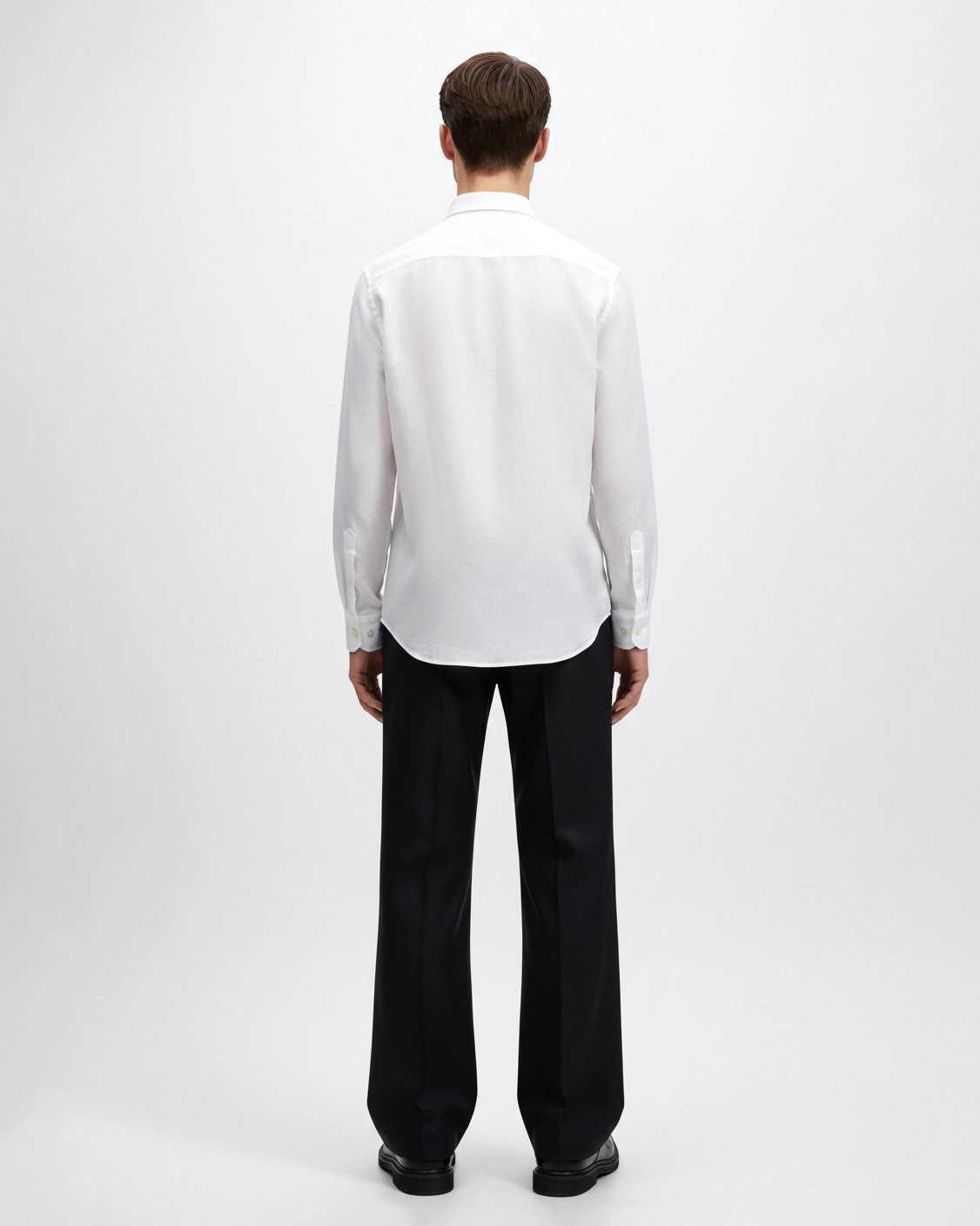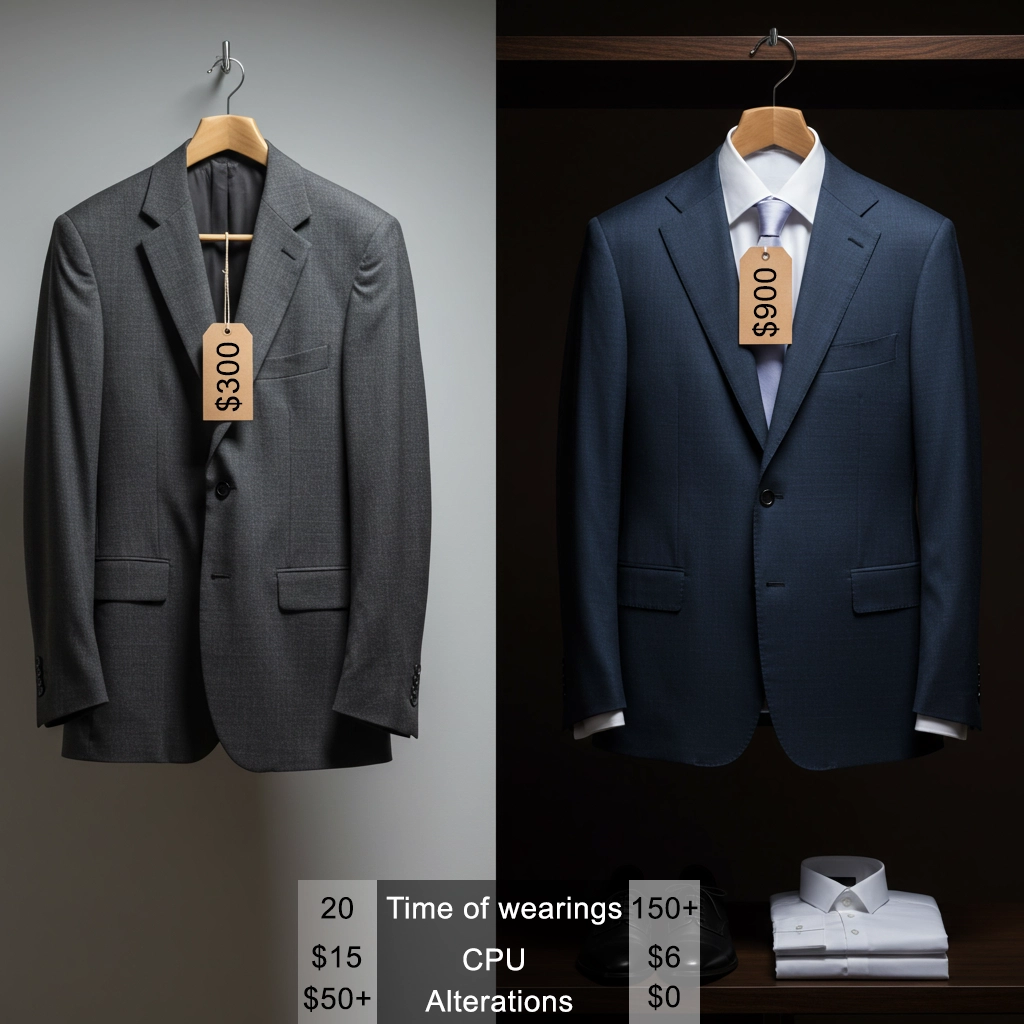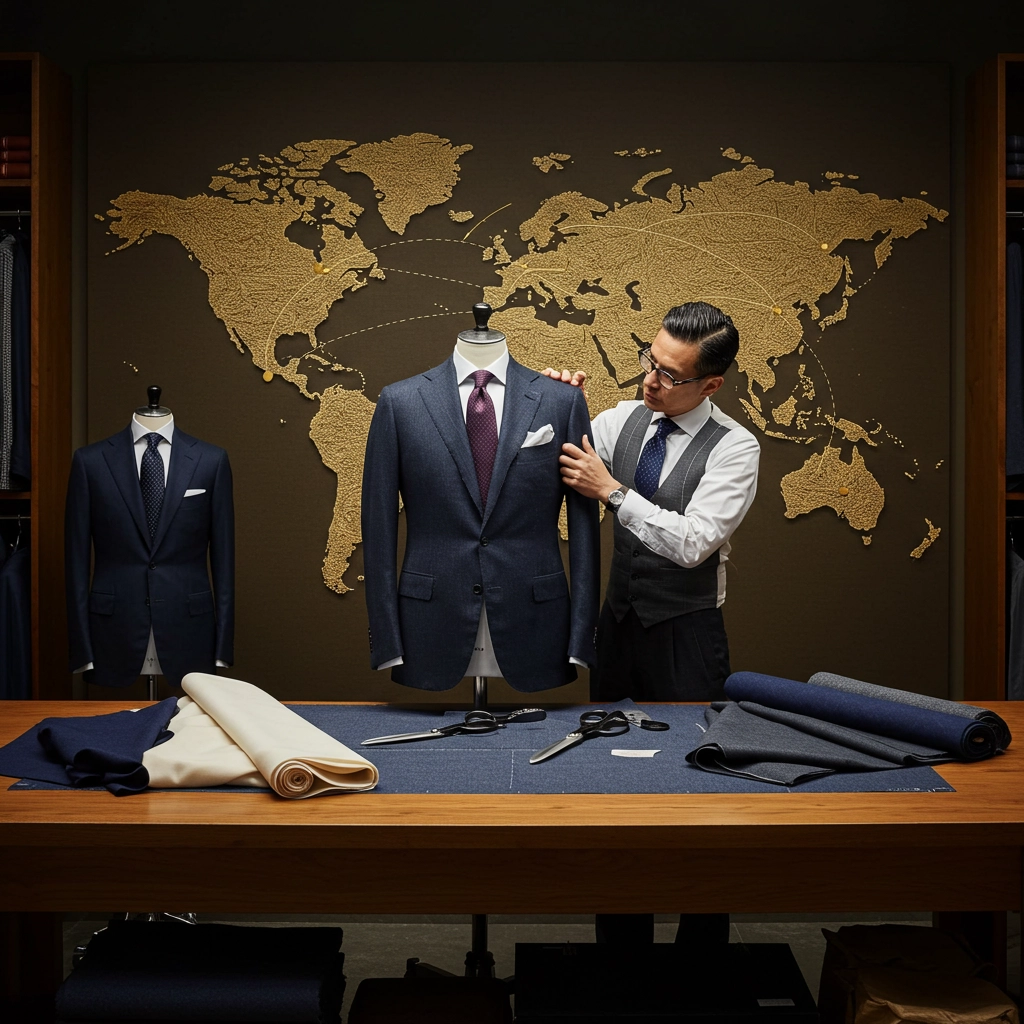-
×
 Men Tuxedo Shirt
1 × 364,00 USD
Men Tuxedo Shirt
1 × 364,00 USD
How Does Location Impact Bespoke Tailoring Cost?
When exploring the world of bespoke clothing, one of the most common questions is: Why does bespoke tailoring cost so much—and why does it vary so widely depending on where you are? From a tailored suit on Savile Row to one made by an independent online tailor, location plays a surprisingly powerful role in determining price.
While traditional tailors often charge more due to local labor rates, rent, and brand prestige, modern innovations like online bespoke tailoring are changing the landscape. Whether you’re searching for the tailored suits for men nearest to your city or browsing for an affordable bespoke suit online, understanding how geography affects pricing can help you make smarter sartorial choices. In this guide, we’ll explore how tailor made suits cost more—or less—depending on where and how they’re made, and why location is no longer the boundary it once was.
Why Tailoring Costs Differ by Location
Understanding the reasons behind price differences in bespoke tailoring can help you make informed choices—whether you’re visiting a local atelier or considering online bespoke tailoring. Here’s how location directly affects what you pay:
Local Labor Costs – Higher wages mean higher suit prices
- Skilled tailoring is labor-intensive and time-consuming. In countries with higher living standards, like the UK or USA, tailors charge more due to local wage regulations.
- Example: A bespoke suit made in London may start at $3,000+, while the same craftsmanship in Vietnam or Thailand could cost under $1,000.
- Outcome: Clients in high-cost countries pay a premium unless they explore more cost-efficient or online options.
Real Estate & Studio Rent – Urban locations inflate pricing
- Tailoring houses in fashion capitals often operate in premium retail spaces. These overheads add to the final bespoke tailoring cost.
- Example: A tailor on Savile Row pays far more in rent than one operating remotely or online.
- Outcome: Choosing online tailors or those outside major metros can lead to more affordable bespoke suits without sacrificing quality.
Taxation & Import Duties – Material sourcing matters
- Importing luxury fabrics can incur high taxes depending on the country. This impacts the overall cost structure of the tailor.
- Example: Suits made from Italian wool in the U.S. may include fabric import duties, unlike local-made suits in Italy or via global online platforms.
- Outcome: Tailors who source and produce in cost-efficient regions can offer better prices on tailor made suits.
Local Market Demand – Prestige and scarcity affect pricing
- Regions with high demand and limited artisan availability often price bespoke as a luxury service.
- Example: In Tokyo or New York, limited appointment slots and brand prestige can drive prices far above the global average.
- Outcome: Exploring tailors in less saturated or emerging markets (or online) may offer a better value proposition.
Brand Positioning by Geography – Location signals luxury
- Tailors in prestigious locations often command higher prices because of their brand story, not just the product itself.
- Example: “Tailored suits for men nearest” you in Milan or Paris may come with a luxury markup, even if similar craftsmanship is available elsewhere.
- Outcome: Clients should focus on quality and fit, not just location, especially as online bespoke tailoring offers global access to craftsmanship.
Global Price Comparison — Bespoke Tailoring Around the World
Bespoke tailoring isn’t priced the same everywhere. Depending on where a suit or blazer is made, the bespoke tailoring cost can range from a few hundred to several thousand dollars. Here’s a breakdown of global pricing patterns to help you compare your options smartly:
United Kingdom (London / Savile Row) – Premium pricing for heritage and craftsmanship
- Savile Row is globally recognized for its tailoring heritage—but also for its premium prices.
- Example: A traditional bespoke suit in London typically costs $3,500–$6,000+, reflecting high labor rates, historic prestige, and real estate.
- Outcome: Great for collectors or purists, but not ideal if you’re seeking an affordable bespoke suit for everyday wear.
Italy (Naples / Milan) – Artisan quality meets luxury status
- Italian tailoring offers a softer silhouette with an emphasis on relaxed elegance.
- Example: Bespoke suits in Naples or Milan often start from $2,000–$5,000, depending on fabric and tailor reputation.
- Outcome: Perfect for clients who want luxury with personality—but expect a premium on tailor made suits cost.
United States (New York / Los Angeles) – Blending tradition with modern pricing
- American bespoke combines heritage style with newer business models, but urban tailoring remains costly.
- Example: Bespoke suits in NYC often range $2,500–$4,500+, driven by labor and rent costs.
- Outcome: Good if you’re searching “tailored suits for men nearest” in a major US city, but online options may offer more value.
Southeast Asia (Vietnam / Thailand) – High skill, lower cost
- Regions like Ho Chi Minh City or Bangkok offer exceptional tailoring at competitive rates.
- Example: A handcrafted bespoke suit here may cost $400–$1,200, depending on the tailor and fabric.
- Outcome: Ideal for those seeking an affordable bespoke suit without compromising on craftsmanship.
Online Bespoke Tailoring (e.g., Rosie Hong) – Global quality, optimized pricing
- New online platforms leverage 3D scan technology and international fabric sourcing to reduce costs.
- Example: At Rosie Hong, bespoke suits start from around $600–$900, including personalized design and virtual fittings.
- Outcome: A smart alternative to city-based tailors—combining the precision of tailor made suits with the convenience of remote service.
How Technology Redefines ‘Location’ in Tailoring
In the past, your choices in bespoke tailoring were limited by geography. Today, thanks to technological innovation—especially in measurement and logistics—location matters far less. Here’s how:
3D Body Scanning – Precision fit without physical fittings
- Advanced 3D scanning captures your body measurements with remarkable accuracy, eliminating the need for in-person appointments.
- Example: Brands like Rosie Hong offer online bespoke tailoring using 3D scan technology, allowing clients anywhere in the world to get suits that fit like second skin.
- Outcome: You no longer need to search for the tailored suits for men nearest you—precision fit is now available from the comfort of home.
Cloud-based Personalization – Design your suit remotely
- Online platforms now let you select fabrics, lapel styles, linings, and more—digitally.
- Example: A customer in Toronto can design a suit sourced from Italian wool, stitched in Vietnam, and delivered globally, all through an intuitive web experience.
- Outcome: You maintain full control over your tailor made suits cost and styling, regardless of your location.
Decentralized Production – Lower operational costs, same craftsmanship
- With centralized design and distributed production, brands reduce costs while maintaining high standards of quality.
- Example: An affordable bespoke suit produced in a cost-efficient location but designed with international standards can rival luxury suits in major cities.
- Outcome: You benefit from a lower bespoke tailoring cost, without compromising on materials or construction.
Remote Support & Digital Fittings – Human touch, virtual convenience
- Today’s online tailors offer video consultations, real-time design previews, and AI-based fit adjustments.
- Example: Rosie Hong’s client services allow customers to refine their fit and style remotely—similar to in-store service, but globally accessible.
- Outcome: Personal attention once tied to location is now integrated into the online bespoke tailoring journey.
Location-Based Pricing: What Should You Pay Attention To?
While location still plays a role in how much a bespoke suit costs, it shouldn’t be the only factor you consider. Here’s what you really need to look at when comparing tailor made suits cost across different places:
Focus on Value, Not Just Geography
- A suit made in a high-rent city doesn’t always mean higher quality—it may just mean higher overhead.
- Example: A $4,000 suit from a downtown atelier may use the same fabric and techniques as a $900 suit made via online bespoke tailoring.
- Outcome: Don’t let location bias you—always compare materials, craftsmanship, and service, not just price tag.
Check Fabric Origin and Construction Quality
- Where the fabric comes from and how the suit is constructed often matter more than where the store is located.
- Example: A suit made in Vietnam using English wool and full-canvas construction can outperform many local options labeled “premium.”
- Outcome: Understanding fabric and build quality helps justify your bespoke tailoring cost more than a city name ever will.
Verify Tailor Credentials and Style Fit
- Different regions have different tailoring aesthetics—choose a tailor whose style fits yours, not just one who’s geographically close.
- Example: Searching for “tailored suits for men nearest” might give you access to traditional or local-cut suits, but they may not match your preference for a sharp Italian silhouette.
- Outcome: Online platforms let you preview cut/style ahead of time, helping align taste with price.
Evaluate the Full Experience: Consultation to Aftercare
- Good service doesn’t end after the suit is made. Look for brands that offer consultations, updates, and alteration support.
- Example: Some online bespoke tailoring services include free digital consultations and remote adjustment guides, replicating in-store service virtually.
- Outcome: High-value service enhances the return on your tailor made suits cost—no matter where the tailor is based.
Balance Convenience with Quality
- It’s tempting to choose whatever’s nearby, but the most convenient option isn’t always the best.
- Example: Choosing an affordable bespoke suit from a trusted online tailor can save you time and money—especially if local options are either too expensive or lack customization.
- Outcome: Today’s digital tailoring options let you prioritize fit and value over geographic convenience.
Final Thoughts
Location can influence bespoke tailoring cost, but it’s no longer the only factor that matters. With the rise of online bespoke tailoring and 3D body scanning, you can now access expert craftsmanship without paying for expensive showrooms or high-rent cities.
Instead of searching for the tailored suits for men nearest you, consider what truly matters: fit, fabric, and value. Whether you’re after a premium experience or an affordable bespoke suit, modern tailoring platforms offer the flexibility and precision once limited by geography.
Where your suit is made matters less than how well it’s made—for your body, your style, and your budget.















